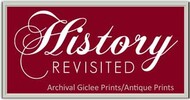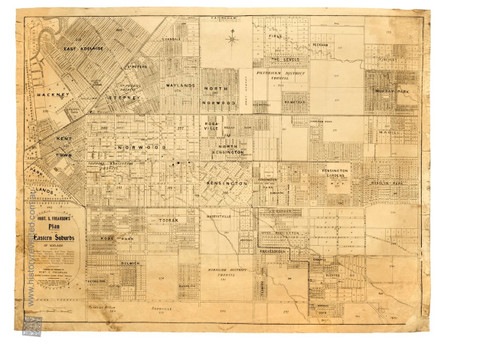 Loading... Please wait...
Loading... Please wait...All prices are in All prices are in EUR
Categories
- Home
- Giclee Prints
- Giclee Eastern Suburbs of Adelaide South Australia Norwood
- Home
- Giclee Prints
- Maps and Charts
- Giclee Eastern Suburbs of Adelaide South Australia Norwood
- Home
- Giclee Prints
- South Australian Scenes
- Giclee Eastern Suburbs of Adelaide South Australia Norwood
- Home
- Giclee Prints
- Maps and Charts
- Australia-Asia-Pacific
- Giclee Eastern Suburbs of Adelaide South Australia Norwood
Product Description
Giclee Print, Map, South Australia, 'Plan of the Eastern Suburbs of Adelaide’, Robert Sands Frearson, c.1913
Showing the contemporary allotments in “Norwood, Kensington, Kent Town, Stepney, St. Peter’s, Maylands, Eastwood, Hackney, Burnside, Magill, Murray Park, Corryton Park, Roslyn Park, Knightsbridge, Marryatville, Toorak, Leabrook, Rose Park, Victoria Park, Kensington Gardens, Evansdale and Holmesdale”.
Limited Edition Giclee printed on conservation paper of the original lithograph "Compiled & Published by Robert S. Frearson, Alfred Chambers, Currie Street, Adelaide" in C.1913
The City of Adelaide was central in a web of small village settlements that later became suburbs, or amalgamated as the population increased. During the 1870’s a new generation of migrants & second-generation families became worker-commuters that were serviced by the horse-drawn trams. In Burnside, Eastwood and Beulah Park population trebled, hence offering attractive investments for small capitalists as they saw an opportunity to build rental cottages for the new-comers. Mining & farming opportunities are well represented to tempt new migrants.
For example: Village of Glen Osmond was hailed a fantastic mining opportunity in 1838 as the metallic ore, copper, was discovered appropriately on the Colonial Treasurers land, Osmond Gilles. This part the development contained most of the service industries while the southern district of Unley and Mitcham composed mainly of farms, gentlemen estate and nursery gardens.
In 1838 lot 285 was subdivided into the Village of Payneham by a city hotel keeper Samuel Payne (had purchased city lot 47 off Light’s 1837 Adelaide Survey). The Village as described in 1866 as a “small agricultural village north -east of Adelaide amidst small farmers growing wheat and hay”.
In Marden, Felixstow & Maylands the most commanding sound was the clanging of the windmills drawing up water for the men and women working their market gardens on the rich alluvial soil by the River Torrens and Third Creek.
The Burnside Council district was established in 1856 but was not the first village in the East as Kensington, Magill and Glen Osmond were well established by 1849.
The Frearson brothers, Samuel, Septimus and Robert were businessmen and publishers in the early days of Adelaide perhaps best remembered for The Pictorial Australian, an illustrated monthly newspaper located on King William Street & Grenfell Street. Robert died in 1937 in the suburb of Knoxville (seen mid -base of this plan now subsumed into Parkside)
Image size 90 x 71cm (36 x 281/3 inch)
Limited Edition /300. Issued with numbered certificate including historical importance in South Australia's development.













